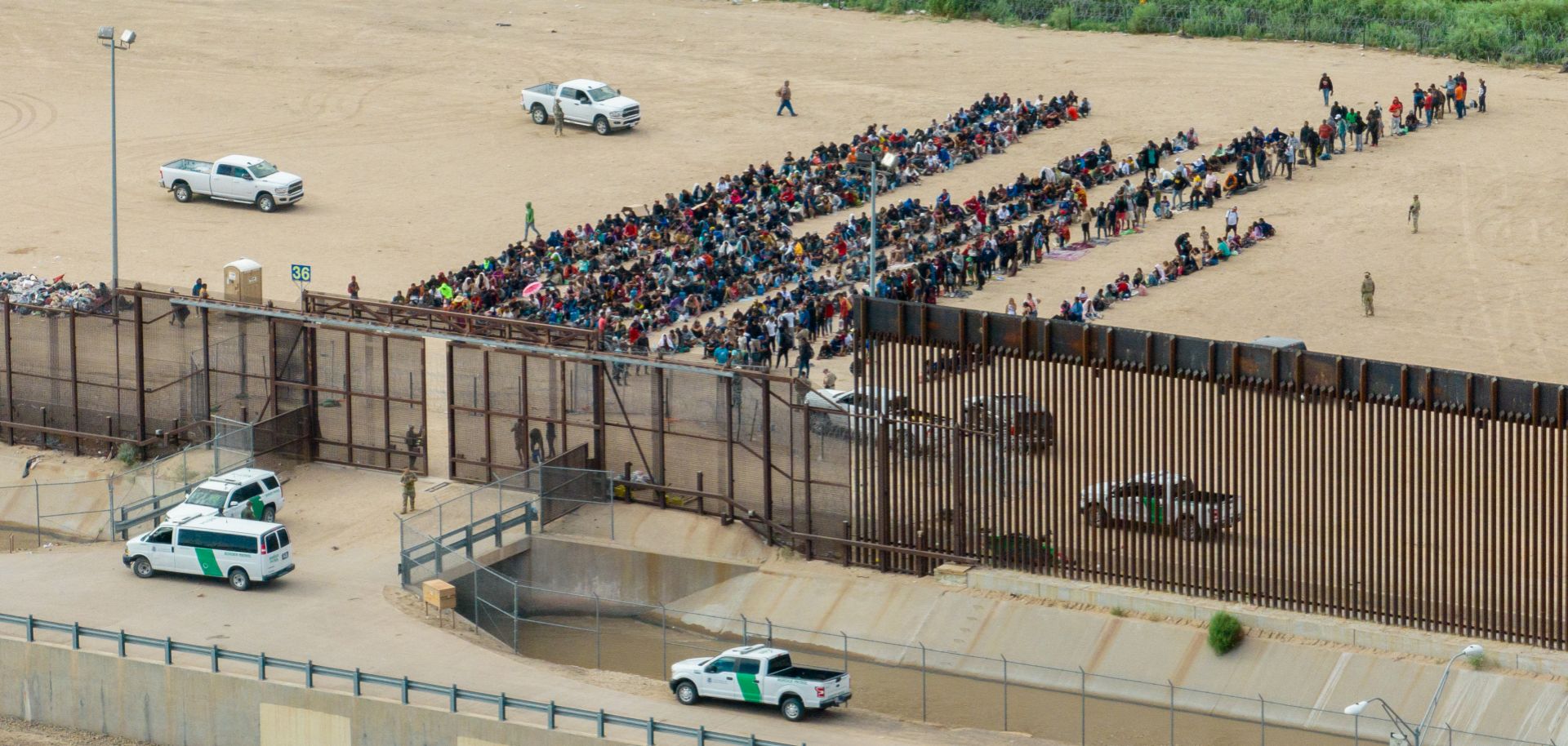The ongoing situation at the U.S.-Mexico border has been a topic of intense debate and concern across the political spectrum. The term “border crisis” generally refers to the significant increase in the number of migrants, including families and unaccompanied minors, attempting to cross into the United States without legal authorization. This complex issue is influenced by a multitude of factors, including economic conditions in Central America, U.S. immigration policies, and international relations.
Understanding the Crisis: Key Factors
- Increase in Migrant Numbers: The U.S. has seen a significant rise in the number of migrants attempting to cross the southern border, particularly in the last few years. According to U.S. Customs and Border Protection (CBP), there were over 2.3 million encounters in fiscal year 2022, a substantial increase from previous years. This surge includes individuals from Mexico, Central America, and other regions, many of whom are fleeing violence, poverty, and political instability in their home countries.
- Root Causes in Migrant-Sending Countries: A primary driver of migration is the dire situation in many Central American countries, often referred to as the Northern Triangle (Guatemala, Honduras, and El Salvador). These nations are plagued by high levels of violence, corruption, and poverty, exacerbated by natural disasters and economic instability. These conditions push individuals to seek safety and better opportunities in the United States.
- U.S. Immigration Policy Shifts: U.S. immigration policy has seen significant changes under different administrations. The current administration, led by President Joe Biden, reversed several policies from the previous administration, including the “Remain in Mexico” policy, which required asylum seekers to wait in Mexico while their claims were processed in the U.S. These policy changes have been cited by some as contributing to the increase in migration, as they are perceived as more lenient by would-be migrants.
- Asylum Seekers and Legal Pathways: The U.S. has long been a destination for individuals seeking asylum due to persecution or violence in their home countries. The Biden administration has attempted to expand legal pathways for asylum, but this has also led to an influx of individuals attempting to enter the U.S. to file claims. The processing system has been overwhelmed, leading to significant backlogs and prolonged detentions, contributing to the perception of a crisis.
- Border Security and Enforcement: The Biden administration has faced criticism for its handling of border security. Opponents argue that the administration’s policies, including ending the construction of the border wall and reducing deportations, have contributed to the increase in illegal crossings. The administration has responded by increasing resources at the border, including deploying additional personnel and expanding facilities to process and house migrants, but challenges remain.
- Humanitarian Concerns: The border crisis also raises significant humanitarian concerns. Many migrants, including children, endure dangerous journeys to reach the U.S. border, often falling victim to human trafficking, abuse, or death. The conditions in detention facilities have been widely criticized, with reports of overcrowding, inadequate medical care, and other issues. The Biden administration has pledged to improve these conditions, but the sheer volume of arrivals has made it difficult to address all concerns effectively.
The Role of the Current Administration
The Biden administration has been both praised and criticized for its handling of the border situation. Supporters argue that the administration is taking a more humane approach to immigration, focusing on addressing root causes in Central America and expanding legal pathways for asylum. Critics, however, claim that the administration’s policies have unintentionally encouraged more illegal migration by creating a perception that the U.S. border is more open than before.
- Policy Reversals: The Biden administration’s decision to reverse Trump-era policies, such as the “Remain in Mexico” policy and reduced deportation priorities, is seen by some as a factor contributing to the increase in migrant numbers. These policy changes have been perceived by migrants as a signal that it is easier to enter the U.S., even though the administration has maintained that the border is not open.
- Efforts to Manage the Crisis: The administration has taken steps to address the crisis, including increasing funding for border security, improving processing capabilities, and working with Central American countries to address the root causes of migration. However, these efforts have been met with mixed results, as the number of migrants continues to overwhelm the system.
- Political and Legal Challenges: The administration’s approach to the border crisis has been challenged in court and by political opponents, who argue that more stringent measures are needed to deter illegal immigration. The legal and political battles have created additional hurdles for the administration in implementing its policies effectively.
Conclusion
The U.S. border crisis is a multifaceted issue that cannot be attributed to a single cause or solution. The current administration’s policies have undoubtedly influenced the situation at the border, both in terms of migrant numbers and the management of resources. However, the crisis is also deeply rooted in the broader socio-economic conditions in migrant-sending countries and the challenges inherent in U.S. immigration law and enforcement.
While the Biden administration continues to navigate these complexities, it faces ongoing pressure from both supporters and critics. Addressing the border crisis will require a balanced approach that considers the immediate need for security and humanitarian response, as well as long-term strategies to address the underlying causes of migration.
